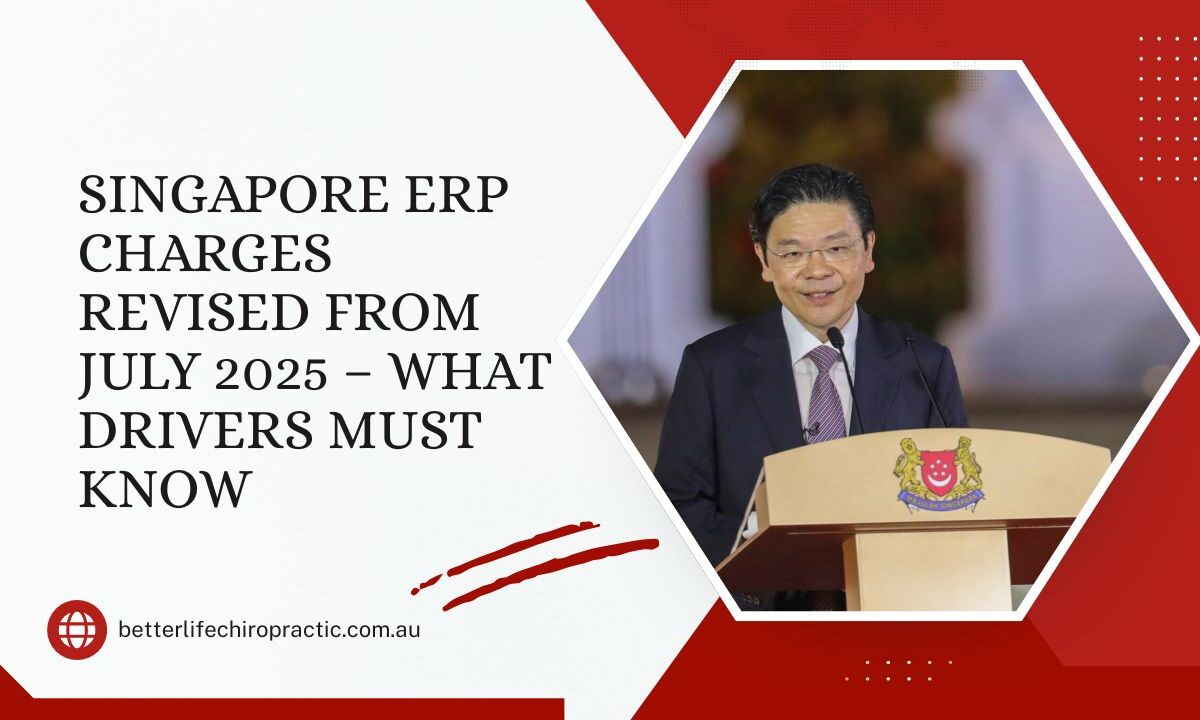Singapore’s Electronic Road Pricing (ERP) system is getting an update in July 2025, and it’s crucial for all drivers to understand how these ERP charge changes will impact their daily commute and wallets.
The Land Transport Authority (LTA) has announced revised rates across multiple gantries in response to changing traffic patterns, vehicle volumes, and the ongoing commitment to reduce congestion.
Whether you’re a daily commuter, private hire driver, or logistics operator, these changes may influence how you plan your routes and manage travel expenses.
Why Are ERP Rates Changing in July 2025?
The ERP rate revision is part of the LTA’s routine quarterly review to manage traffic flow on congested roads. With road usage and vehicle volume increasing post-pandemic recovery, ERP adjustments are intended to:
- Ease peak-hour congestion
- Encourage off-peak travel
- Promote the use of public transportation
- Sustain Singapore’s long-term urban mobility goals
The July 2025 ERP rate adjustments were finalized based on real-time traffic data collected during May and June.
Key Changes in ERP Rates – July 2025
From Monday, 1 July 2025, ERP charges will increase at several gantries during peak periods, while some rates will be reduced in low-traffic zones.
These changes are intended to ensure ERP continues functioning as a responsive, demand-based pricing model.
Below is a summary table of selected gantries with revised rates
| ERP Gantry Location | Time Slot (Weekdays) | Previous Charge (SGD) | New Charge (SGD) |
|---|---|---|---|
| CTE (Southbound) – Before Braddell | 8:00 AM – 8:30 AM | $1.50 | $2.00 |
| PIE (Eastbound) – Kallang Bahru | 7:30 AM – 8:00 AM | $0.00 | $1.00 |
| AYE (Westbound) – Alexandra Rd | 6:30 PM – 7:00 PM | $1.00 | $1.50 |
| ECP (Citybound) – Fort Rd | 7:00 AM – 7:30 AM | $1.50 | $2.00 |
| KPE (Northbound) – Defu Flyover | 8:00 AM – 8:30 AM | $2.00 | $2.00 (unchanged) |
Note: Charges are based on cars. Different rates apply to motorcycles, heavy vehicles, and buses.
Who Is Affected by the ERP Rate Changes?
The July 2025 ERP changes will impact:
- Private vehicle owners commuting during peak hours
- Ride-hailing and delivery drivers operating within core traffic zones
- Logistics and freight operators using expressways
- Tourist drivers unaware of ERP timings
To avoid unnecessary costs, drivers should check updated ERP timings and gantry maps before planning their journeys.
How to Stay Updated and Plan Around ERP Charges
Drivers can avoid higher ERP tolls by adjusting travel times or using alternative routes. Here’s how you can stay ahead:
Use LTA Traffic Apps and ERP Alerts
The MyTransport.SG app provides real-time ERP updates, dynamic traffic forecasts, and road incident alerts.
Set Route Preferences on GPS Tools
Apps like Google Maps and Waze allow you to avoid ERP gantries by adjusting settings or viewing cost estimates per route.
Consider Public Transportation
If you’re traveling to the CBD during peak pricing hours, switching to MRT or buses can be significantly more cost-effective.
Understanding the Purpose of ERP in 2025
Singapore’s ERP system, first implemented in 1998, is evolving with technological upgrades and sustainability goals. The next-gen ERP system, based on satellite-based tracking, is expected to roll out in phases from late 2025, offering more accurate, flexible tolling methods.
Until then, the current gantry-based ERP system remains in operation, and drivers must comply with updated rates and in-vehicle unit (IU) alerts.
Frequently Affected Zones and Peak Periods
The highest ERP charges are typically recorded in:
- Central Expressway (CTE)
- Pan-Island Expressway (PIE)
- East Coast Parkway (ECP)
- AYE towards CBD during evenings
The peak ERP hours remain:
- 7:00 AM – 9:30 AM (morning rush)
- 5:30 PM – 7:30 PM (evening rush)
Penalties for Non-Payment of ERP Charges
If a vehicle passes through an ERP gantry without sufficient balance in its CashCard or vCashCard, a notice of payment is issued. Failure to pay within the stipulated period can result in fines or legal enforcement.
To avoid penalties:
- Ensure your IU is working properly
- Maintain sufficient balance in your ERP payment card
- Register for auto-reload services
What’s Coming Next: Satellite-Based ERP Rollout
The LTA is preparing for a new ERP system leveraging satellite technology, allowing for distance-based charging. Expected to roll out in late 2025, it aims to:
- Replace existing gantries
- Calculate charges based on actual road usage
- Offer greater fairness in congestion pricing
Stay tuned for official announcements as implementation begins.
The July 2025 ERP charge revision reflects Singapore’s continued effort to manage urban traffic and promote sustainable commuting.
Drivers should review the new ERP rates, adapt their travel schedules, and monitor updates from the LTA to minimize costs. Being informed can help you drive smarter and spend less.
FAQs
1. Are ERP charges going up everywhere in July 2025?
No. While several gantries will see increased ERP charges, a few low-congestion zones may remain unchanged or experience reductions. Always check the latest gantry-specific updates before traveling.
2. How do I know if I was charged ERP correctly?
You can log in to the LTA ERP Transaction Portal or use the MyTransport.SG app to view your ERP transaction history. If discrepancies arise, contact LTA customer service.
3. Will the satellite-based ERP system affect charges immediately?
No, the satellite-based ERP system is expected to be implemented later in 2025 and will operate in phases. Until then, the current gantry-based system and rates apply.
